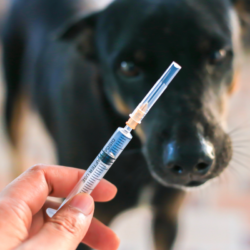Cryptococcosis is a potentially serious fungal infection caused by the Cryptococcus fungus. Although relatively rare in healthy individuals, it can become a serious problem in immunocompromised individuals, such as patients with HIV/AIDS or those on immunosuppressive therapy. Understanding the basic aspects of this disease, including its causes, symptoms and treatment options, is crucial for effective case management and preventing serious complications.
What is the infectious agent?
Cryptococcosis is an infection caused by two varieties of encapsulated yeast, Cryptococcus neoformans and Cryptococcus gattii. These micro-organisms, also known as ” fungi “, can cause a mild infection in healthy individuals, but can be severe in immunocompromised individuals. In the latter group, it can lead to meningoencephalitis, a complication that can be life-threatening if left untreated.
Cryptococcosis accounts for around 15% of HIV-associated deaths, mainly in Africa. The predominant pathogen is Cryptococcus neoformans, present in soil contaminated with bird droppings, particularly pigeon droppings, and organic matter. It is generally transmitted by air.
The other infectious agent, Cryptococcus gattii, is found on plants such aseucalyptus, mainly in tropical regions. Although it can infect healthy individuals, it also seems to affect more immunocompromised people, as well as those with pulmonary disorders, aged over 50 and/or smokers.
Cryptococcus neoformans
Cryptococcus neoformans, an encapsulated yeast-like fungus, can survive on plants or animals (it is found in pigeon droppings). This species, also known by its teleomorph name, Filobasidiella neoformans, belongs to the large class of organisms known as Basidiomycota.
C. neoformans usually grows as a single-celled yeast by budding. Under certain conditions, in nature or in the laboratory, C. neoformans can grow as a filamentous fungus. If it grows as a yeast, C. neoformans has a large capsule composed mainly of polysaccharides.
This pathogenic fungus causes meningitis in immunocompromised individuals (e.g. AIDS). The C. neoformans species comprises three variants: C. neoformans v. gattii, v. grubii and v. neoformans. The first is found mainly in the tropics. It has also been observed in the south of Vancouver Island, on the west coast of Canada. It has been established that it is sufficiently distinct from the other subspecies to qualify as a distinct species. C. neoformans v. grubii and v. neoformans are found worldwide and often in soil contaminated by bird droppings. The genome sequence of C. neoformans v. neoformans was published in 2005.
In 2007, researchers discovered a black mould containing Cladosporium sphaerospermum, Wangiella dermatitidis and Cryptococcus neoformans inside the Chernobyl nuclear power plant. This discovery was made in an environment where radiation levels were several hundred times higher than normal. However, the biochemical mechanisms by which these organisms can use gamma rays to produce their metabolic energy using melanin, a black biological pigment, remain unknown.
Cryptococcus gatti
Cryptococcus gattii, formerly known as Cryptococcus neoformans var. gattii, is an encapsulated yeast found mainly in tropical and subtropical climates. Its teleomorph is Filobasidiella bacillispora, a filamentous fungus classified in the Tremellomycetes. C. gattii is one of the two agents responsible for cryptococcosis (along with C. neoformans). Symptoms of C. gattii infection include pulmonary cryptococcosis, basal meningitis and cerebral cryptococci, sometimes accompanied byskin, tissue, lymph node, bone and jointinfections. In recent years, it has appeared in British Columbia, Canada, and in the Pacific Northwest, potentially carried by tsunamis such as the one in Alaska in 1964.
Cryptococcus gattii has recently been subdivided into five species: C. gattii, C. bacillisporus, C. deuterogattii, C. tetragattii and C. decagattii.
This yeast occupies a specific habitat in the hollows of decaying trees in tropical, subtropical and temperate regions, contaminating adjacent soils and wood products. Studies have identified the presence of C. gattii in soil debris associated with certain tree species in Southern California.
Although originally associated with tropical and subtropical regions, C. gattii infections have been reported in a variety of areas, including sub-Saharan Africa, Papua New Guinea, Northern Australia, Brazil, India and the Pacific Northwest. This yeast has a reputation for causing more cryptococcosis even in immunocompetent individuals, with a propensity to be confined to the lungs rather than spreading to the central nervous system.
How does cryptococcosis manifest itself in animals?
Cryptococcus neoformans is a fungal pathogen that mainly infects mammals, with a particularly high incidence in cats and ruminants.
The infection is spreading worldwide. Clinical manifestations vary according to the species infected:
- in cats, the upper respiratory tra ct is mainly affected,
- in dogs, neurological damage is more common,
- and in ruminants, cases of mastitis have been reported.
Although often asymptomatic in birds, particularly pigeons, cryptococcosis is well known to vets in a variety of other animals, including cattle, sheep, goats, horses, wildlife and other birds. However, it is indogs, and especially cats, that this infection is most often diagnosed, making it the most common deep fungal disease in cats.
In infected animals, Cryptococcus generally causes chronic sinusitis, skin ulcers, and sometimes local tissue inflammation leading to the appearance of a bump on the bridge of the nose in cats. It should be noted that in cats, this infection can be associated with a FeLV-type infection.
Common sources of infection include soil, poultry manure and pigeon droppings. Furthermore, global warming, by altering environmental conditions and favouring the adaptation of pathogenic fungi to higher temperatures, could potentially increase the epidemiological risks of cryptococcosis for humans.
How is this disease transmitted?
Cryptococcus neoformans yeasts are widely distributed in the environment, mainly on soils rich in organic matter such as bird droppings, particularly pigeon droppings, where they multiply abundantly. They are highly resistant and can persist for several years in dried droppings. Transmission to animals is mainly by air.
In humans, cryptococcosis is transmitted mainly by inhalation of yeasts from the outside environment. No contamination has been observed from animals suffering from cryptococcosis. In France, around a hundred cases are reported each year, mainly in immunocompromised individuals.
Immunocompromised individuals are particularly at risk when they carry out activities involving the suspension of yeast-contaminated dust, such as work or cleaning in areas contaminated by bird droppings, including buildings, pigeon houses, attics and barns.
After inhalation, Cryptococcus can spread throughout the body, particularly to the brain and meninges, leading to cryptococcal meningoencephalitis, a potentially fatal condition if left untreated. Lung lesions can also occur, often healing spontaneously in healthy people, but leading to complications in immunocompromised individuals.
In addition to the lungs and nervous system, Cryptococcus can infect other tissues such as the skin, bones, joints, liver, spleen, prostate, etc., causing localised lesions that may be asymptomatic or cause mild to moderate symptoms.
What are the symptoms in humans?
The symptoms and course of cryptococcosis vary from person to person. In immunocompromised individuals, the main symptom is central nervous system involvement. The most common clinical form is disseminated meningoencephalitis, which occurs in over 60% of cases, and in over 80% of cases in HIV-infected patients. Symptoms include headache, moderate fever, dizziness, irritability, ideation disorders, seizures, obnubilation, even coma, cranial nerve paralysis and motor deficit. In the event of treatment, early mortality remains high, at around 27% in non-HIV patients and 14% in HIV patients.
The infection may also be located in the lungs, manifesting itself as pneumonitis characterised by cough and moderate fever, or in any other organ. Skin lesions may also appear, resulting from dissemination of the yeast in the blood, in the form of painless papules liable to ulcerate. Some patients may be asymptomatic.
Central nervous system
Localisation of cryptococcosis in the central nervous system most often takes the form of tuberculous meningitis, characterised by a progressive onset, frontal headaches, stiff neck and vomiting. If left untreated, this form of meningitis always leads to death within a year. Cryptococcal meningoencephalitis usually begins gradually and insidiously, with headaches and moderate fever. This is followed by other symptoms such as dizziness, mood and memory disorders, motor and sensory deficits, and a stiff neck.
Cryptococcus neoformans has the ability to invade the meninges and brain parenchyma, generally indicating a disseminated infection when meningeal involvement is observed. In immunocompromised patients, an extra-meningeal location is found in over 50% of cases. In AIDS, cryptococcal meningitis may present with minimal or no symptoms, although headache is common, sometimes progressing slowly to altered mental status.
Symptoms of disseminated meningoencephalitis are varied and mainly due to cerebral oedema. They include headache, moderate fever, dizziness,irritability, blurred vision,agitation, ocular or facial paralysis, blindness, delirium, convulsions, motor disorders and coma. The prognosis of the disease is often linked to the speed at which symptoms develop and the extent of cranial hypertension. Prompt treatment is essential at this stage, but is only effective in 75-85% of cases.
Lungs
The most common clinical manifestation of cryptococcal infection of the lungs is subacute bronchitis, characterised by moderate fever and a rare cough producing little mucous sputum. Non-specific signs of pulmonary infection also include cough and moderate fever. In HIV-infected individuals, the infection may present as severe pneumonia andshortness of breath.
Cryptococcus pneumonia is usually asymptomatic during primary pulmonary infection and recovers spontaneously. Non-specific symptoms may include cough with or without sputum, chest pain, fever and dyspnoea. Some cases may progress to acute respiratory distress. Many patients infected with Cryptococcus remain asymptomatic despite the presence of pulmonary infection. Those with symptoms of pneumonia usually have a cough and other non-specific respiratory symptoms. However, in AIDS patients, cryptococcal infections can manifest as severe progressive pneumonia, with acute dyspnoea and radiographic findings similar to those of Pneumocystis infection.
Skin and other sites
Cutaneous involvement of cryptococcosis occurs in approximately 5-10% of patients and is often a sign of haematogenous dissemination of the infection. Initially, a papule forms, evolving into a pustule before finally ulcerating. These lesions are mainly located on the face and extremities. Cutaneous inoculations generally lead to the formation of limited cankers. Dermatological dissemination is common, manifesting as pustular, papular, nodular or ulcerated lesions, sometimes similar to acne, molluscum contagiosum or basal cell carcinoma.
The cutaneous forms of disseminated cryptococcosis present various aspects, sometimes evoking acne, sometimes gummy, ulcerated lesions, more or less granulomatous and often extensive. This cutaneous manifestation is relatively frequent and takes the form of painless papules tending to ulcerate.
Bone involvement in cryptococcosis generally affects the epiphyses, skull bones and vertebrae, presenting with a pseudotubercular appearance. Lesions are frequently multiple, small, lytic and slowly progressive.
In disseminated forms of the disease, all organs may be affected. Blood cultures are often positive. Potentially affected organs include the eye (chorioretinitis, endophthalmitis, conjunctivitis), heart (myocarditis, endocarditis, pericarditis), kidneys, prostate, liver, pancreas and adrenals.
How is cryptococcosis diagnosed?
The diagnosis of cryptococcosis is based on several tests:
- A clinical examination to assess the symptoms presented by the patient.
- Analysis of fluids and tissues is essential. Samples such as cerebrospinal fluid, sputum, urine, tissue and blood are cultured for the presence of Cryptococcus neoformans.
- A chest X-ray may be taken to identify any lung abnormalities.
Rapid tests are now available to facilitate bedside diagnosis. Cryptococcus neoformans can be detected in superficial lesions, cerebrospinal fluid, sputum or even bronchoalveolar lavage. The fungus is identified by direct examination, using Indian ink staining, which highlights its round to oval shape and its reproduction by budding. It can also be cultured on a specific medium, such as niger agar.
Other diagnostic methods include culture of cerebrospinal fluid, sputum, urine and blood, and staining of fixed tissue samples.Analysis of cerebrospinal fluid and serum for cryptococcal antigen is also common.
Symptoms of infection generally suggest a clinical diagnosis of cryptococcosis in immunocompetent patients. In contrast, more severe infection is seen in immunocompromised patients. Identification of the micro-organism in culture or detection of specific antigens confirms the diagnosis.
How is this fungal infection treated?
Treatment of cryptococcosis begins with an attack phase consisting of the combined administration ofamphotericin B (Fungizone) and flucytosine (Ancotil) for at least two weeks. A triazole derivative such as fluconazole (Triflucan) can then be used as a relay treatment. For severe forms such as meningoencephalitis and pneumonia, a combination of liposomal amphotericin B and 5-fluorocytosine, followed by high-dose fluconazole, is recommended. In cases of intracranial hypertension, lumbar punctures may be performed.
Clinical improvement is often slow, requiring one to two weeks, while remission generally only occurs after at least six weeks of initial treatment. Sequelae may persist after recovery. For HIV patients, prophylactic treatment of relapses is systematic until full immune reconstitution is achieved with antiretroviral therapy.
Treatment varies according to the manifestation of the disease. In the case of cryptococcal meningitis,amphotericin B with or without flucytosine is preferred, followed by fluconazole. For non-meningeal forms, fluconazole is generally effective.
In asymptomatic patients without HIV and with incident cryptococcal infection, antifungal treatment may not be necessary. However, in the presence of extra-pulmonary symptoms, treatment with fluconazole is recommended.
For more severe disease, such as meningitis, the standard regimen includes induction withliposomal amphotericin B and flucytosine, followed by consolidation with fluconazole. For AIDS patients, the treatment is similar, with particular attention to monitoring intracranial pressure.
Finally, for patients with mild to moderate symptoms of localised lung involvement, treatment with fluconazole alone may be sufficient.
How can contamination be prevented?
General preventive measures against cryptococcosis includegeneral hygiene practices such as reducing exposure to dust by good ventilation and moistening floors before cleaning. Cleaning and disinfection of premises and equipment are essential, using authorised disinfectants in accordance with government guidelines.
It is crucial to provide adequate training and information to employees on the risks associated with cryptococcosis, as well as on the collective and individual preventive measures to be adopted. Appropriate means such as drinking water, soap, paper towels and a first aid kit must be put in place, in consultation with the occupational physician.
Separate lockers for street clothes and work clothes are recommended to avoid cross-contamination. Work clothes and personal protective equipment must be appropriate, in good condition, clean and well maintained. It is also advisable to avoid dust-generating activities as far as possible and to clean up animal droppings with care, avoiding high-pressure water jets and wearing gloves and boots.
Compliance with hygiene rules is essential, in particular regular hand washing with soap and drinking water, a ban on eating, drinking or smoking in the workplace, and regular cleaning of work clothes, gloves and boots. If you areimmunocompromised, it is important to follow your GP’s recommendations regarding the continuation of your professional activity and to avoid any activity exposing you to dust dispersion, possibly assessing the need to wear respiratory protection in consultation with your occupational physician.
Epidemiology
Cryptococcosis is a frequent infection in immunocompromised individuals, particularly those suffering from AIDS, and is responsible for more than 600,000 deaths annually in its meningeal form (2009 figures).
In terms of animal health, cryptococcosis is not considered a contagious disease, and in terms of public health, it does not require mandatory reporting. At present, the disease is not included in the tables of occupational diseases. Cryptococcus neoformans var. neoformans and gattii strains are classified in hazard group 2 under the French Labour Code.
Although 80% of individuals have anti-C. neoformans antibodies without developing cryptococcosis, the disease remains rare. Before the introduction of antiretroviral treatments in 1996, cryptococcosis affected between 1 and 10% of HIV-infected patients. Since then, it has mainly been seen in patients who have failed virological therapy or are unaware of their seropositivity, with around 100 cases per year in France. However, in regions where antiretroviral treatment is not widely available, cryptococcosis remains a major cause of death among AIDS patients, particularly in Africa and South-East Asia.
In non-HIV-infected patients, the number of cases remains stable, with an estimated annual incidence of 0.8 cases per 100,000 in the United States. The main factor favouring cryptococcosis is a lack ofcellular immunity. Other risk factors include prolonged corticosteroid therapy, lymphoid haemopathy, organ transplantation and sarcoidosis.
Cryptococcosis is responsible for around 15% of HIV-related deaths, the majority of which occur in sub-Saharan Africa. It is considered an opportunistic infection in patients withimmunodeficiency. In France, around 40% of cases of cryptococcosis are associated with HIV.







